Late July and it seems as if the bees and butterflies have finally abandoned a long lie-in and are out and about. Like a lot of people, I have been struck by the drop in numbers this year; it has felt palpable and overtly obvious. But today, sitting in an on-off shade as the sun is drawn in and out from large rolling white clouds, I have seen a small resurgence of bees, butterflies and hoverflies. No, not as many still as previous years, but enough to give me hope.

They are particularly taken with the wild oregano which is flowering with dusky pink frothy heads. It is a bit of a thug of a plant really, spreading itself widely, taking over long grasses and liking surrounding the bases of trees and hedge lines. But I let it do what it wants for the very purpose of knowing the sustenance it gives to insects. It is also a delightful scent that gets released as you brush up against it; warm, slightly spicy and invoking of warmer climes.
Spires of hyssop are also beginning to flower in blue and white and these too pull in the pollinators.
Our garden has gone a little wild and rogue this year as I haven’t been able to do as much as usual. Part of me is desperate to get it back under some kind of control, another part is enjoying sitting back and watching what happens and who arrives amid the chaos.

A month or so ago we had dreadful trouble with a deer who had found a way into our garden. It would come in at night and chomp its way through various plants. Its favourite snacks seemed to be the Japanese anemone, geums, pink sorrel, strawberry plants and the young thin branches of the apple tree I planted last year. Now, as much as I encourage wildlife into the garden, we had to draw the line at this. So it was that we spent a few weeks putting off planting out our vegetable crops while we tried to figure out where the deer was getting in and then putting things in place to try to stop it. This saw me each morning doing a round of the garden in my pyjamas, dressing gown and boots stealthily trying to see where the deer (who was found lurking under the trees on many occasions) would suddenly dash off to and run away via. If anyone saw me, I must have looked quite insane and this view likely compounded by the putting up of fencing at possible entry points adorned with bells, ribbons and shiny strips to try to put the deer off. My covert dashes in bedwear failed, however Darling Husband managed to spot the place of its egress and successfully close off access.

Now, I sit and see that against the odds of munching decimation, everything has grown back fully and flowering. And there is hope showing itself again with the return of what was thought lost and done.

I picked the first plums and blackberries today, the latter though deep, black and soft, were face-pulling-ly tart; too early and without enough consistent warmth to sweeten them. There is a bramble which always grows within the branches of the neighbour’s apple tree which hangs over our fence. The spiny stems adorned with wild fruit lying next to swelling apples, always makes me think they are producing some kind of hybrid ready-filling for an apple and blackberry crumble.

I know most people wish days away in the later months to hurry spring and summer forward, but I have a kind of aching love and comfort in autumn. I do not long for the days to pass quickly to get there, every day is to be savoured, but I am not one to fear or dread the changing of the seasons to the one where I feel most at home.
And I’m not even sure that we have seasons any longer. We often appear to have each one every month for just a few days at a time. Change is happening, it is undeniable and it is hard at times not to see only the negative shifts. But nature continues to show us there is hope and we must build on that, and perhaps a starting place might be to make sure we also notice the good and the hopeful. Never lose sight. Never lose heart.

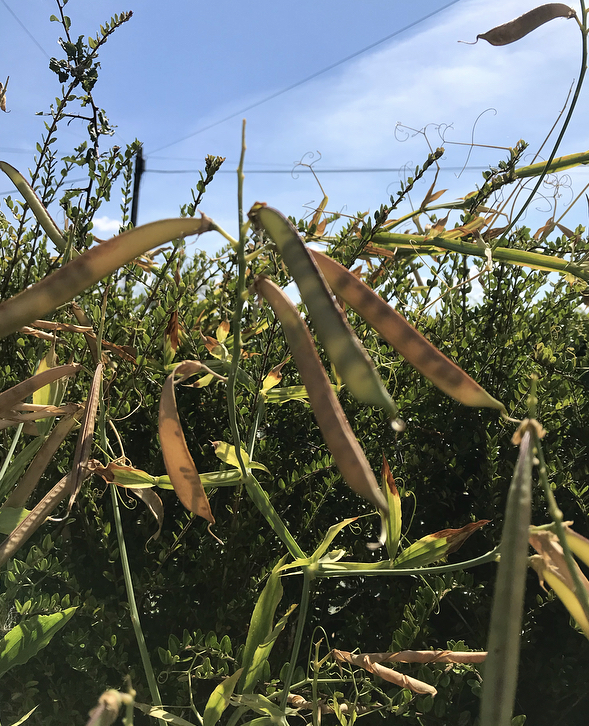
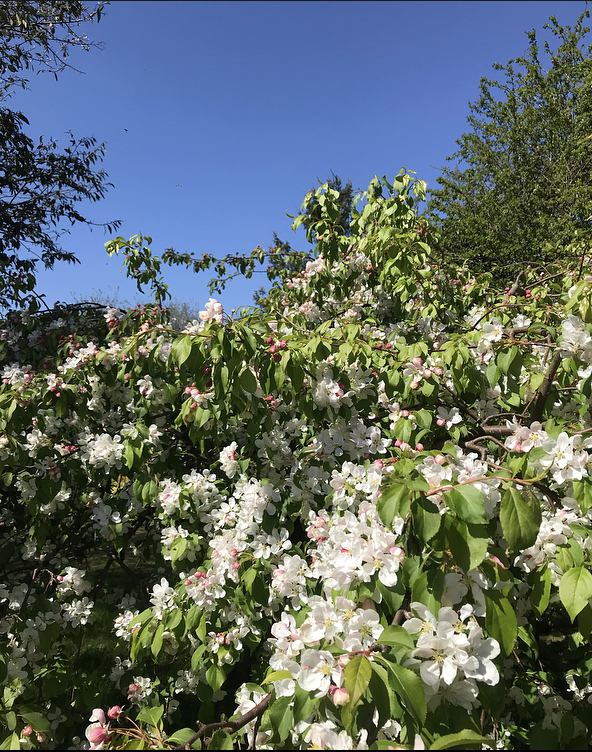
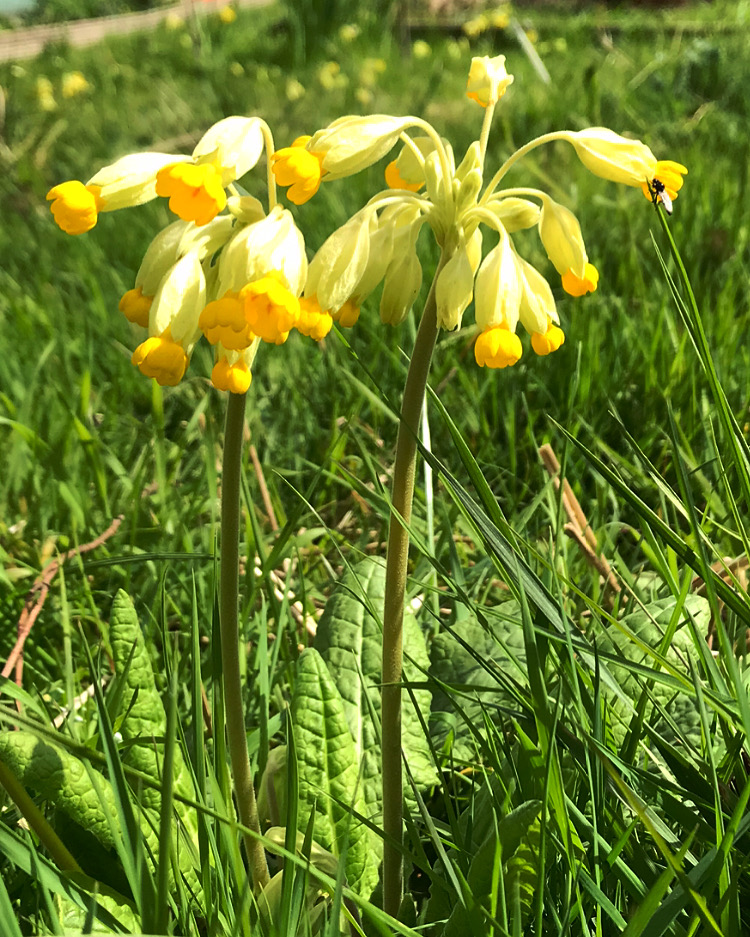

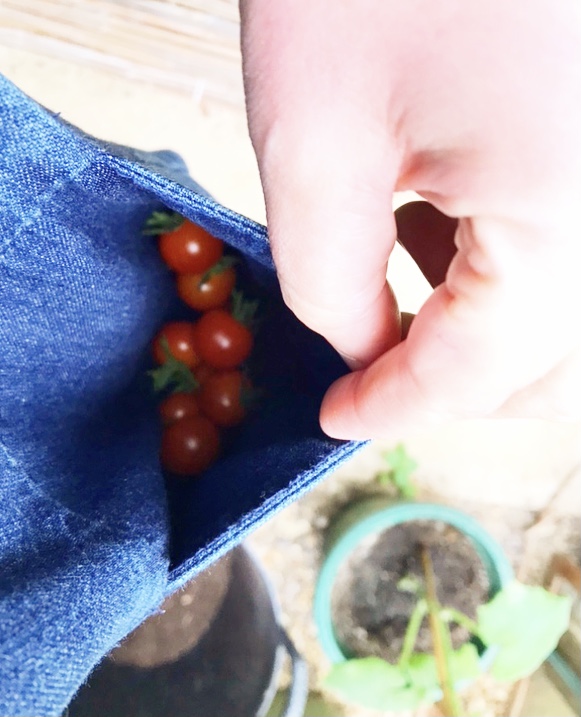
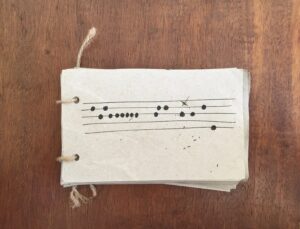
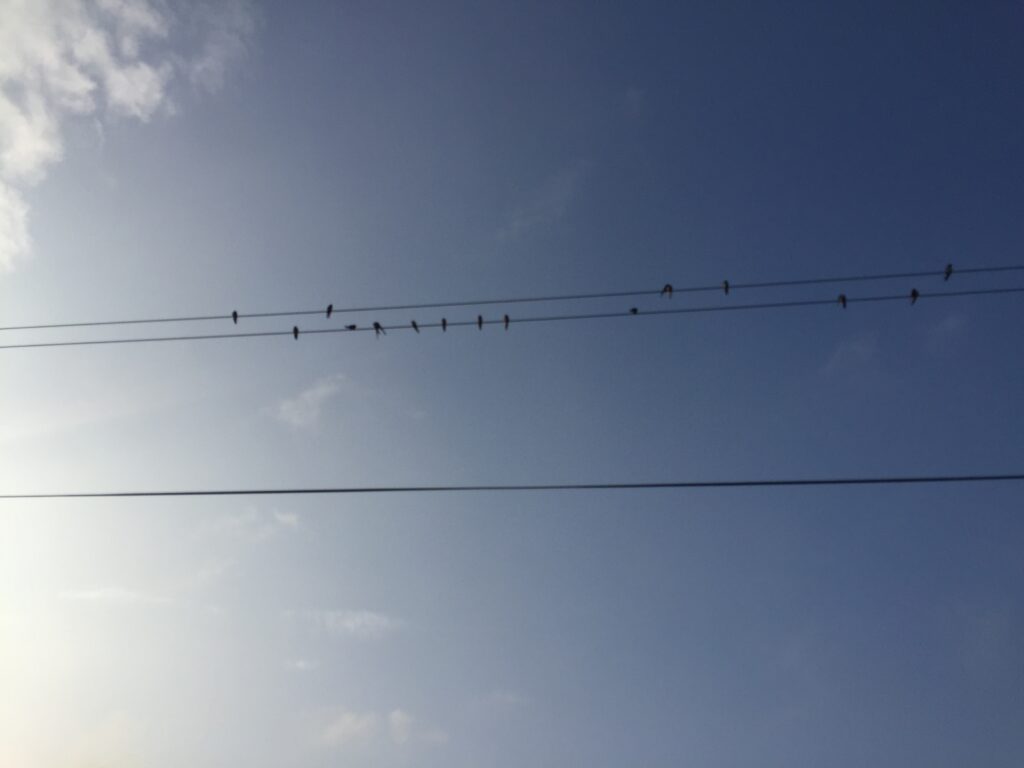
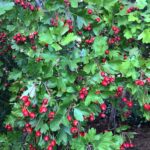 berries and green leaves are draping from the hawthorn trees. Towering
berries and green leaves are draping from the hawthorn trees. Towering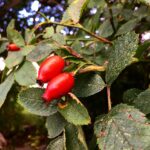 birds love them so. I have made rosehip tea in the past, collecting, cutting, scraping out the insides and drying the hips and it was tasty – but, a lot of not very pleasant work. The inside of a rosehip is filled with prickly, sticky hairs and they all have to be removed or will be an irritant when drinking. It takes a long time to prepare so many fiddly little hips and I know from experience that I don’t really have the patience.
birds love them so. I have made rosehip tea in the past, collecting, cutting, scraping out the insides and drying the hips and it was tasty – but, a lot of not very pleasant work. The inside of a rosehip is filled with prickly, sticky hairs and they all have to be removed or will be an irritant when drinking. It takes a long time to prepare so many fiddly little hips and I know from experience that I don’t really have the patience.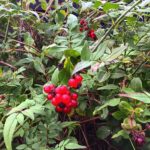 shiny red berries punctuate the long meandering tendrils. It doesn’t seem to matter how much or when I cut this particular honeysuckle back, it soon
shiny red berries punctuate the long meandering tendrils. It doesn’t seem to matter how much or when I cut this particular honeysuckle back, it soon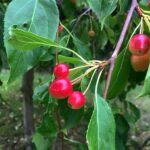
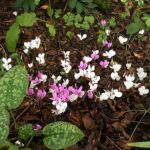 tubers. Cyclamen have their seed heads on tight coils which when ripe project the seed head and seeds onto the ground – the sticky seeds are then sometimes moved about by ants. Just imagine if you could capture the pinging and flinging of seeds by the release of tensed coils on film – I can’t help but visualise it in some sort of Acme cartoon cannon style with some dramatic full-orchestra music going on behind the whizzing and whirring.
tubers. Cyclamen have their seed heads on tight coils which when ripe project the seed head and seeds onto the ground – the sticky seeds are then sometimes moved about by ants. Just imagine if you could capture the pinging and flinging of seeds by the release of tensed coils on film – I can’t help but visualise it in some sort of Acme cartoon cannon style with some dramatic full-orchestra music going on behind the whizzing and whirring.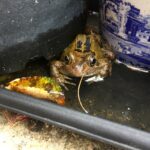 spotted a frog making use of the plant pot tray on her patio. It seemed quite happy and we think perhaps waiting for some of the dropped insect-based bird food from the feeders nearby. And we have a new resident, Gary. Gary is a snail who was doing the sterling job of keeping my niece’s fish tank clean. Alas, the fish are no more, which is timely actually,
spotted a frog making use of the plant pot tray on her patio. It seemed quite happy and we think perhaps waiting for some of the dropped insect-based bird food from the feeders nearby. And we have a new resident, Gary. Gary is a snail who was doing the sterling job of keeping my niece’s fish tank clean. Alas, the fish are no more, which is timely actually, 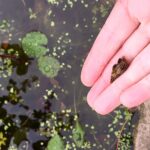 as niece is just about to head off to university. Needless to say, my sister was not about to keep a tank going in her daughter’s absence for just one snail, and so Gary was ferried over to our pond via a small tub with holes in and a fruit basket in the footwell of my car.
as niece is just about to head off to university. Needless to say, my sister was not about to keep a tank going in her daughter’s absence for just one snail, and so Gary was ferried over to our pond via a small tub with holes in and a fruit basket in the footwell of my car.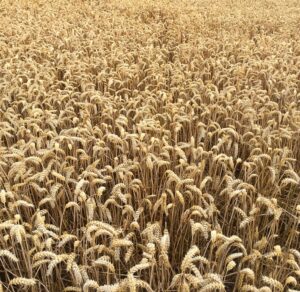 harvested. (This is the time of ridiculously bad hayfever for me and I will now spend the next few months breathing as if I had just run a marathon while playing the tuba). What is it that we normally do which we have not been doing that has allowed a boost in such nature as butterflies? Or, is it that we are just noticing them more because of our changed circumstances? I offer these questions with no answers, by the way, I am merely musing. If it is the former then it makes me feel quite sad because that would show the direct negative impact we humans have on the natural world – I can’t help but have the sneaky suspicion that this is probably true.
harvested. (This is the time of ridiculously bad hayfever for me and I will now spend the next few months breathing as if I had just run a marathon while playing the tuba). What is it that we normally do which we have not been doing that has allowed a boost in such nature as butterflies? Or, is it that we are just noticing them more because of our changed circumstances? I offer these questions with no answers, by the way, I am merely musing. If it is the former then it makes me feel quite sad because that would show the direct negative impact we humans have on the natural world – I can’t help but have the sneaky suspicion that this is probably true.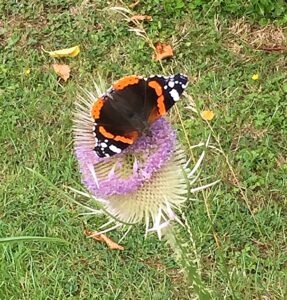
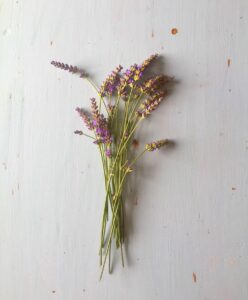
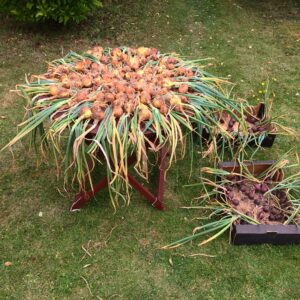 onions recently and are still feeling abundantly smug about the haul. Quite possibly over one-hundred; and ten garlic bulbs as well. As ever we are running out of ways to eat excessive amounts of courgette, it is currently being added to pretty much every meal – and still they come.
onions recently and are still feeling abundantly smug about the haul. Quite possibly over one-hundred; and ten garlic bulbs as well. As ever we are running out of ways to eat excessive amounts of courgette, it is currently being added to pretty much every meal – and still they come.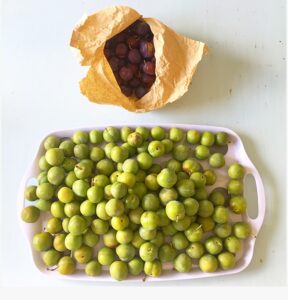
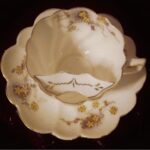
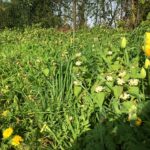 Now that the bulk of flowering is over I have begun to reduce the area by at least half – and found a lovely surprise under it all – a patch of wild garlic which I had no idea was there. Next to the fenced grass pile (which has been phenomenal at giving us mulch at this time when garden centres have been closed) there peered up at me some rather light-deprived wild garlic; rather sorry leaves but lovely delicate white flowers. I am hoping it will recover now that it is not weighed down by comfrey and I might try transplanting some to a place a little easier to get to and keep clear.
Now that the bulk of flowering is over I have begun to reduce the area by at least half – and found a lovely surprise under it all – a patch of wild garlic which I had no idea was there. Next to the fenced grass pile (which has been phenomenal at giving us mulch at this time when garden centres have been closed) there peered up at me some rather light-deprived wild garlic; rather sorry leaves but lovely delicate white flowers. I am hoping it will recover now that it is not weighed down by comfrey and I might try transplanting some to a place a little easier to get to and keep clear.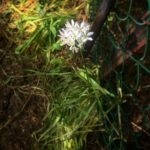
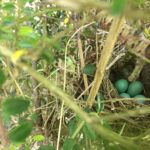 Naturally, I immediately backed off and I am happy to report that I have seen an adult on the nest since, so I am no longer worried about having disturbed it.
Naturally, I immediately backed off and I am happy to report that I have seen an adult on the nest since, so I am no longer worried about having disturbed it.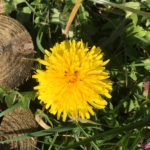

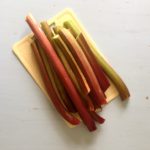 triumphant red arms, defiantly waving enormous leaves at me. And so, as I write this, I have a huge amount of rhubarb chutney simmering away as well as three crumbles ready for the freezer. It is the spider plant of the garden – un-killable!
triumphant red arms, defiantly waving enormous leaves at me. And so, as I write this, I have a huge amount of rhubarb chutney simmering away as well as three crumbles ready for the freezer. It is the spider plant of the garden – un-killable!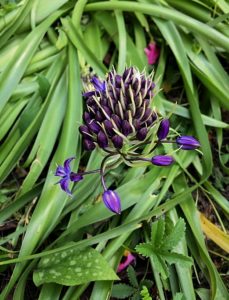 The best thing though, was that they told me that they called them angry panthers, and to this day, that is what I call them too. I know roughly where it is located but the ground covering mat of ajuga, pulmonaria and creeping cinquefoil, has hindered any precise pinpointing – hence the search. So far, the angry panther remains elusive, but I live in hope.
The best thing though, was that they told me that they called them angry panthers, and to this day, that is what I call them too. I know roughly where it is located but the ground covering mat of ajuga, pulmonaria and creeping cinquefoil, has hindered any precise pinpointing – hence the search. So far, the angry panther remains elusive, but I live in hope.